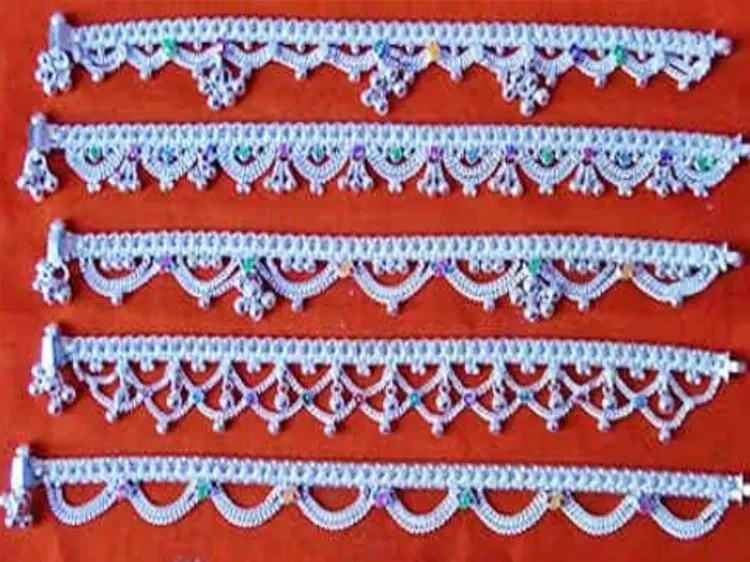Why Are Salem’s Silver Anklets Still Awaiting GI Tag?

Synopsis
Key Takeaways
- Salem’s silver anklets are waiting for a GI tag for nearly three years.
- Lack of documentary proof is the main hurdle in the GI application process.
- A GI tag would enhance the global reputation and standardize quality.
- The industry employs about 1.15 lakh people, showcasing its economic importance.
- Artisans fear for the future as younger generations seek other job opportunities.
Chennai, Aug 9 (NationPress) Almost three years after the submission of an application, the renowned silver anklets of Salem remain without the coveted Geographical Indication (GI) tag. The delay, as per industry stakeholders, arises from a lack of documentary evidence needed to prove the craft’s antiquity and uniqueness -- even though Salem stands as one of India's primary centers for silver anklet manufacturing.
This trade, woven into the city's cultural heritage for generations, predominantly features small-scale, family-operated businesses led by artisans who often lack formal education or reliable record-keeping.
“Our operations have never been formally documented,” stated C. Sri Anandarajan, president of the Salem District Kolusu Manufacturers Kaivinai Sangam.
“The GI registry requires proof that this craft has been practiced in the same locality for a minimum of 25 years, and gathering that evidence has proven to be our greatest challenge.”
In contrast to gold jewelry, which is marked with the BIS 916 hallmark, silver jewelry in India does not adhere to a uniform quality standard.
Manufacturers contend that a GI tag would not only implement such standardization but also elevate the global standing of Salem’s silver anklets. Markets in Sri Lanka, Singapore, Malaysia, and Vietnam are identified as having significant potential for direct exports.
“Currently, our anklets are dispatched to other states before being exported, resulting in a loss of their unique identity,” Anandarajan noted.
“With a GI tag, Salem anklets could carry their name internationally and adhere to consistent quality standards.”
The lack of official recognition is also jeopardizing the industry's future workforce. Many seasoned craftsmen worry they might be the last generation in this trade, as younger artisans seek more stable incomes in painting, construction, or petrol stations.
The sector remains a crucial source of employment in Salem, with nearly 10,000 units providing livelihoods to about 1.15 lakh people -- 78 percent men and 22 percent women.
Production is decentralized, with various stages managed by specialized groups across different neighborhoods.
Salem produces over 15 varieties of silver anklets, including the unique ‘Thalakkolusu,’ designed for infants.
This design expands as the child grows, allowing it to be worn for up to four years. Until the GI tag is awarded, however, this age-old craft continues to struggle for its rightful recognition on both national and international platforms.









